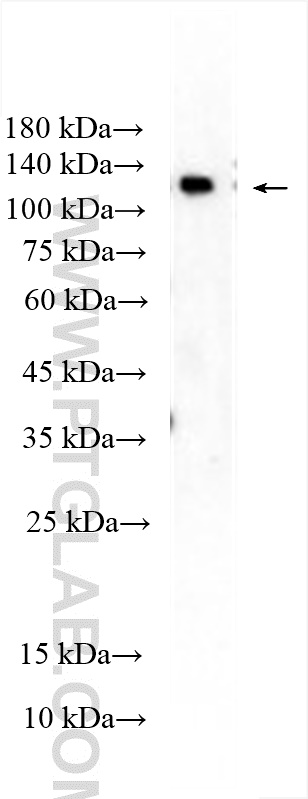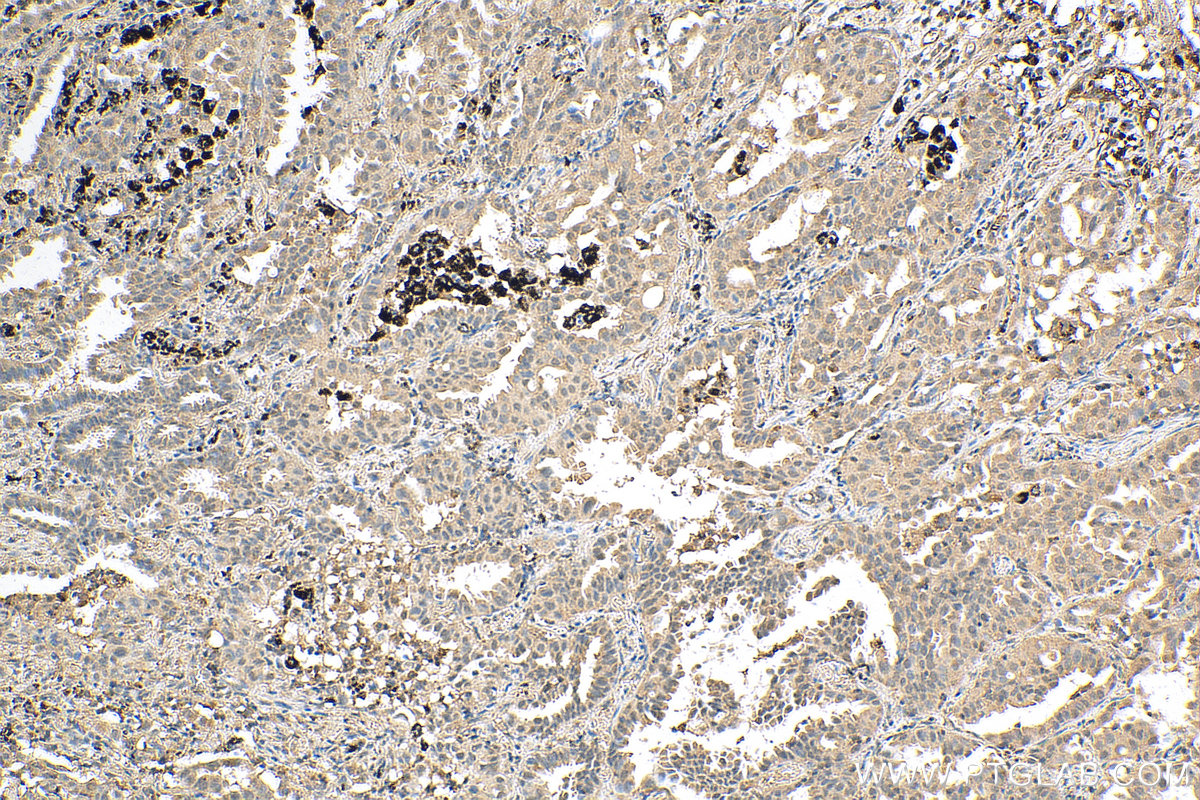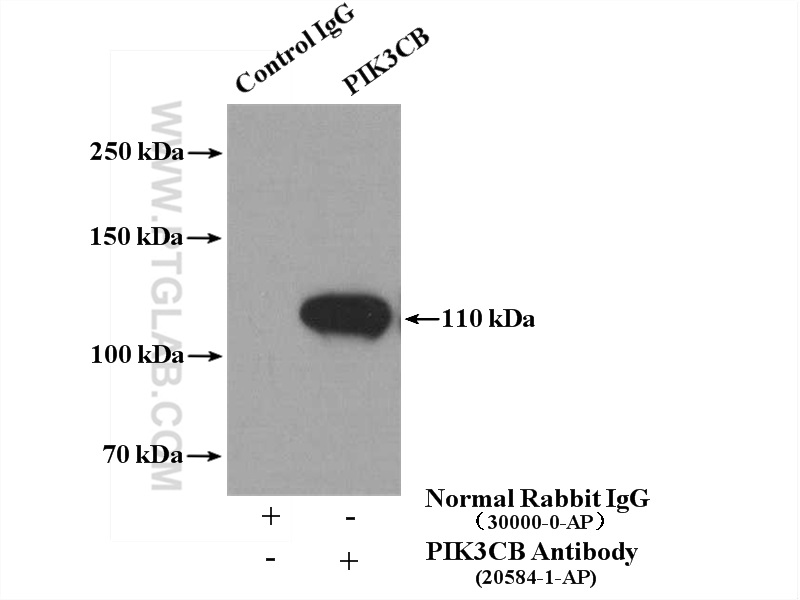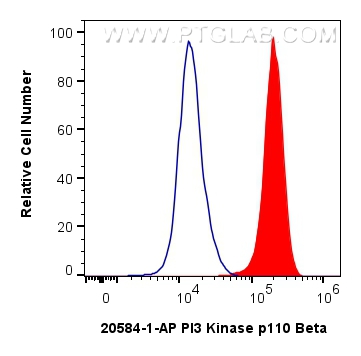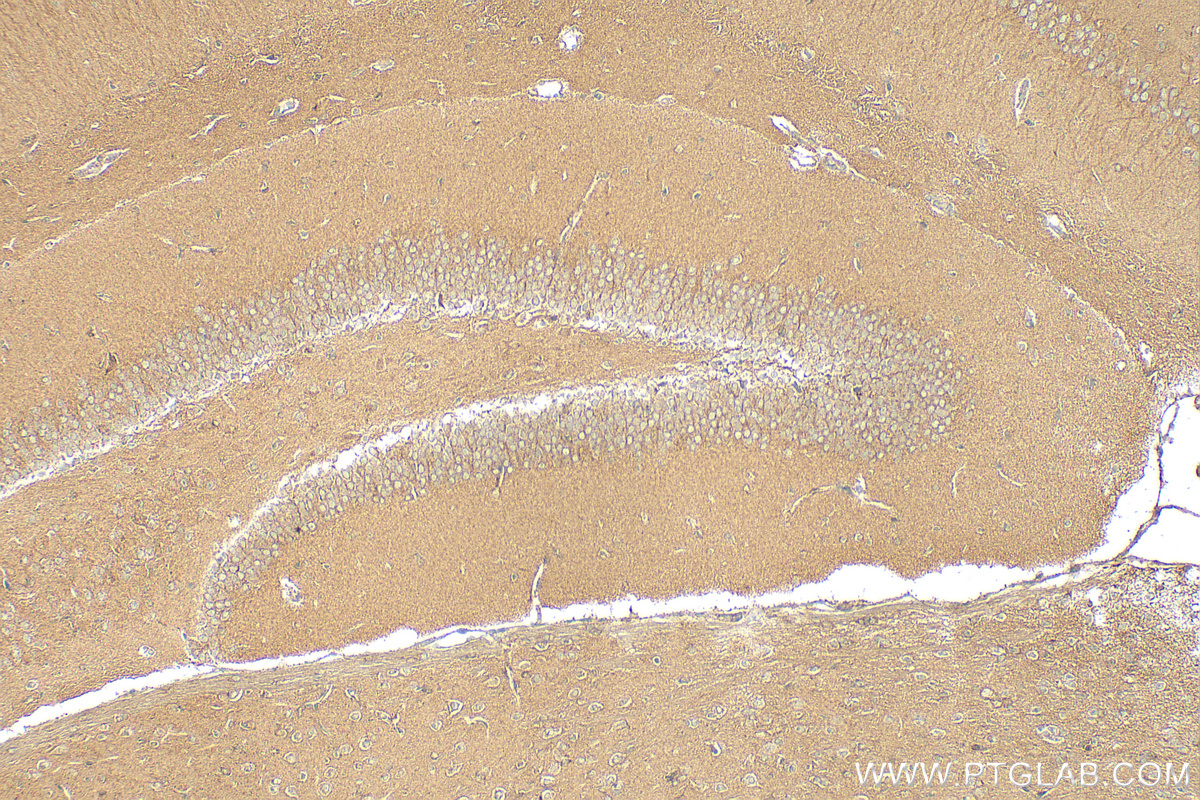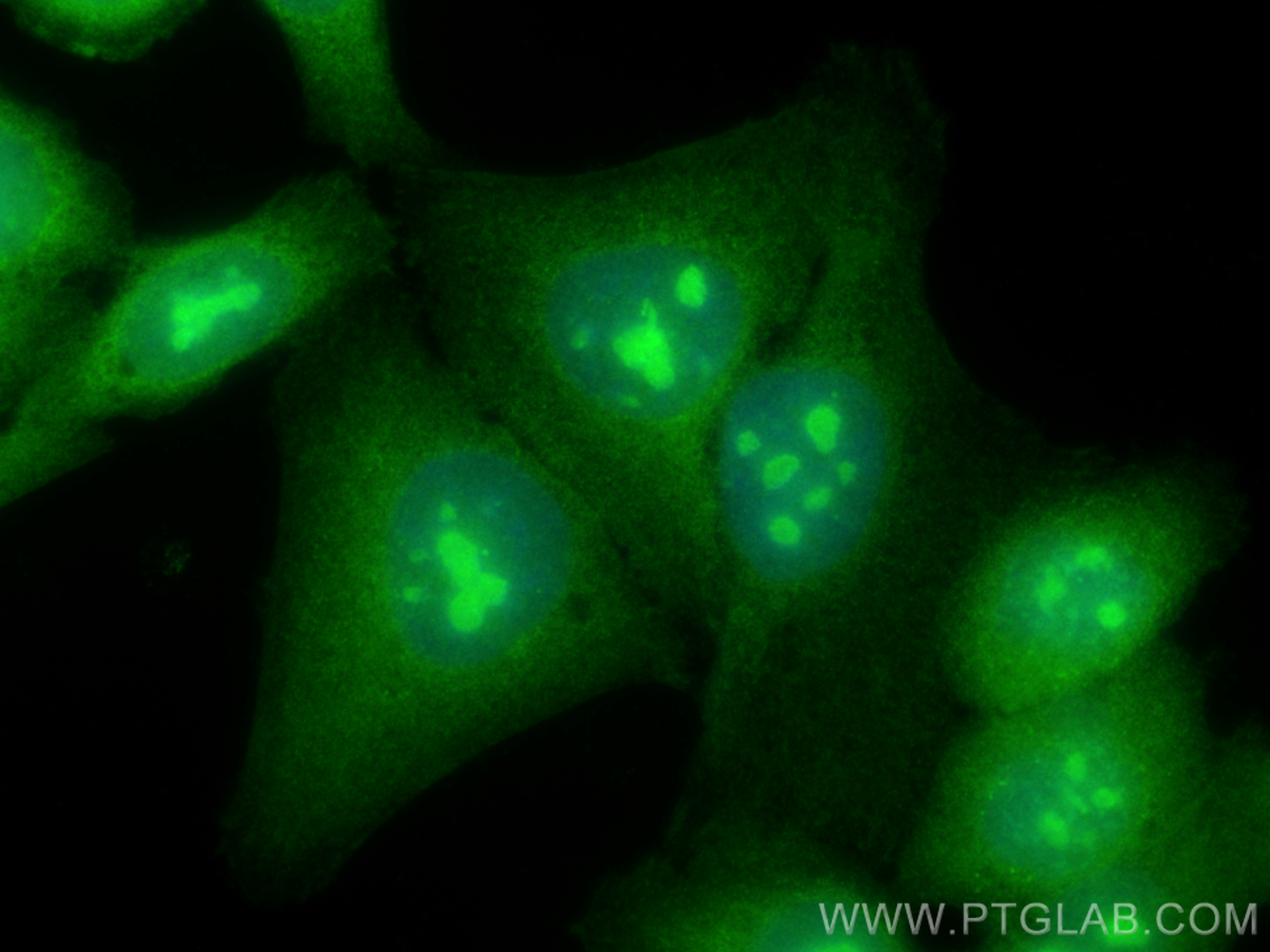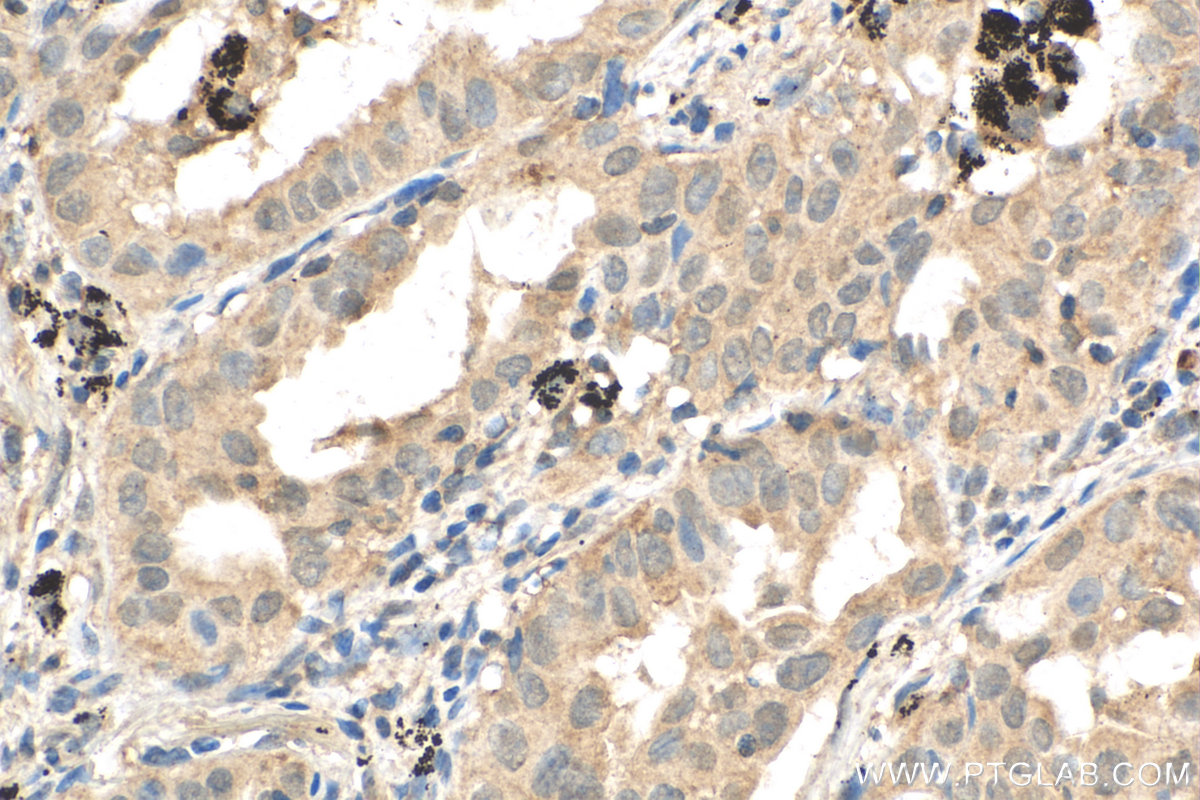验证数据展示
经过测试的应用
| Positive WB detected in | rat liver tissue |
| Positive IP detected in | HepG2 cells |
| Positive IHC detected in | human lung cancer tissue, mouse brain tissue Note: suggested antigen retrieval with TE buffer pH 9.0; (*) Alternatively, antigen retrieval may be performed with citrate buffer pH 6.0 |
| Positive IF/ICC detected in | HepG2 cells |
| Positive FC (Intra) detected in | HeLa cells |
推荐稀释比
| 应用 | 推荐稀释比 |
|---|---|
| Western Blot (WB) | WB : 1:200-1:1000 |
| Immunoprecipitation (IP) | IP : 0.5-4.0 ug for 1.0-3.0 mg of total protein lysate |
| Immunohistochemistry (IHC) | IHC : 1:50-1:500 |
| Immunofluorescence (IF)/ICC | IF/ICC : 1:200-1:800 |
| Flow Cytometry (FC) (INTRA) | FC (INTRA) : 0.80 ug per 10^6 cells in a 100 µl suspension |
| It is recommended that this reagent should be titrated in each testing system to obtain optimal results. | |
| Sample-dependent, Check data in validation data gallery. | |
产品信息
20584-1-AP targets PI3 Kinase p110 Beta in WB, IHC, IF/ICC, FC (Intra), IP, CoIP, ELISA applications and shows reactivity with human, rat samples.
| 经测试应用 | WB, IHC, IF/ICC, FC (Intra), IP, ELISA Application Description |
| 文献引用应用 | WB, IHC, IF, CoIP |
| 经测试反应性 | human, rat |
| 文献引用反应性 | human, mouse, rat, pig, rabbit, canine, chicken, zebrafish, fish, megalobrama amblycephala |
| 免疫原 |
Peptide 种属同源性预测 |
| 宿主/亚型 | Rabbit / IgG |
| 抗体类别 | Polyclonal |
| 产品类型 | Antibody |
| 全称 | phosphoinositide-3-kinase, catalytic, beta polypeptide |
| 别名 | PI3K p110(beta), PIK3CB, EC:2.7.1.153, EC:2.7.11.1, p110 BETA |
| 计算分子量 | 123 kDa |
| 观测分子量 | 110-130 kDa |
| GenBank蛋白编号 | NM_006219 |
| 基因名称 | PI3 Kinase p110 Beta |
| Gene ID (NCBI) | 5291 |
| RRID | AB_10734439 |
| 偶联类型 | Unconjugated |
| 形式 | Liquid |
| 纯化方式 | Antigen affinity purification |
| UNIPROT ID | P42338 |
| 储存缓冲液 | PBS with 0.02% sodium azide and 50% glycerol, pH 7.3. |
| 储存条件 | Store at -20°C. Stable for one year after shipment. Aliquoting is unnecessary for -20oC storage. |
背景介绍
PIK3CB(phosphatidylinositol 4,5-bisphosphate 3-kinase catalytic subunit beta isoform) is also named as PIK3C1, PI3K-beta, p110beta. The gene encodes a 1070 amino acid protein which belongs to the PI3/PI4-kinase family. Phosphoinositide 3-kinases (PI3Ks) have been implicated as participants in signaling pathways regulating cell growth by virtue of their activation in response to various mitogenic stimuli. The class I PI3 kinases are heterodimers composed of 110 kDa catalytic subunits that associate with regulatory adaptor proteins. Four class I catalytic subunits have been identified, PIK3CA (p110α), PIK3CB (p110β), PIK3CD (p110δ) and PIK3CG (p110γ)(PMID:19177002). This antibody is specific to PIK3CB.
实验方案
| Product Specific Protocols | |
|---|---|
| FC protocol for PI3 Kinase p110 Beta antibody 20584-1-AP | Download protocol |
| IF protocol for PI3 Kinase p110 Beta antibody 20584-1-AP | Download protocol |
| IHC protocol for PI3 Kinase p110 Beta antibody 20584-1-AP | Download protocol |
| IP protocol for PI3 Kinase p110 Beta antibody 20584-1-AP | Download protocol |
| WB protocol for PI3 Kinase p110 Beta antibody 20584-1-AP | Download protocol |
| Standard Protocols | |
|---|---|
| Click here to view our Standard Protocols |
发表文章
| Species | Application | Title |
|---|---|---|
Brain MMP13 inhibition rescues cognitive decline in Alzheimer transgenic mice via BACE1 regulation. | ||
Redox Biol GSTP1-mediated S-glutathionylation of Pik3r1 is a redox hub that inhibits osteoclastogenesis through regulating autophagic flux | ||
Adv Healthc Mater A ROS-Responsive Liposomal Composite Hydrogel Integrating Improved Mitochondrial Function and Pro-Angiogenesis for Efficient Treatment of Myocardial Infarction. | ||
Clin Cancer Res STAT3/HOTAIR signaling axis regulates HNSCC growth in an EZH2-dependent manner. | ||
Environ Res Effects of external environment on promoter methylation of PIK3R5 and related pathway regulation in steroid-induced femoral head necrosis | ||
Phytomedicine Deciphering the pharmacological mechanisms of Rostellularia procumbens (L) Nees. Extract alleviates adriamycin-induced nephropathy in vivo and in vitro |
